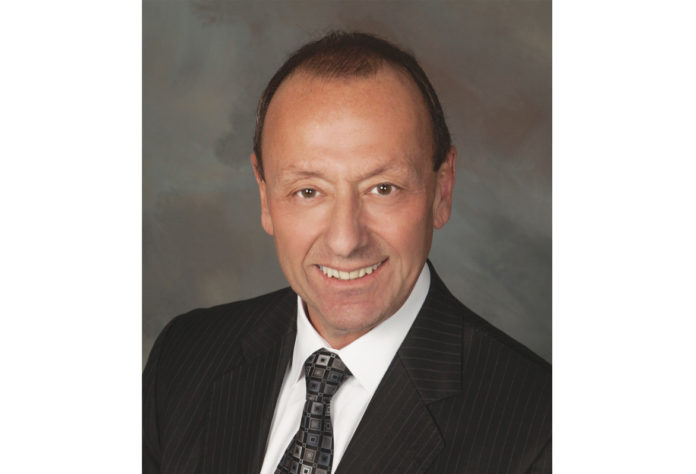by Andrew Klebanow
Marketing professionals transitioning from leadership roles in conventional hospitality enterprises such as hotels and resorts to casinos often find it difficult applying their skills when assuming positions in casino operations. The same can be said of recent college graduates with degrees in hotel administration. While there are parallels between hospitality marketing and casino marketing, they are two distinctly different disciplines. This can pose challenges to even the most astute hospitality marketing professional.
Classes in hotel marketing often speak of the ‘marketing mix’ to educate students on the basic principles of hospitality marketing. The marketing mix in hotels is often summarized in four words: product, price, place and promotion. These principles refer to the balance of resources of the company in providing the product, pricing it, getting it to the customer, and telling the customer about it. While these terms are often used in hotel marketing, they are fundamentally different when applied to casinos.
In hotel marketing, product refers to the lodging product offered to the consumer. The product is comprised of the hotel rooms and suites, lobby area, restaurants, and other amenities such as meeting space, spa, and other services. The product could be a luxury seaside resort, a limited-service hotel adjacent to a highway, or a convention-hotel in a major city. The product is what customers seek in an overnight accommodation and is often the key differentiator between hotels and hotel brands.
Price is the price that the hotelier charges for the rooms and suites, restaurant meals, meeting space rentals, and other amenities. Of the four P’s, price is the only element that generates revenue, and is one that hotel managers have the greatest amount of operational control over. For the hotelier, the rates charged for lodging is the most important source of revenues. It is supported by revenues garnered from meetings, food and beverage, and other services.
Place refers to location. This term was actually derived from general marketing principles and refers to getting the product to customers. This is also referred to as channels of distribution. In hotel marketing (and casino marketing), place refers to getting customers to the location of the property. Hotel developers first determine the optimal location to build their property, design it appropriately to the market, then use various marketing strategies to drive customers to their property. This too is referred to as channels of distribution. Expedia and Hotels.com are channels of distribution as is the hotel’s website.
Promotion is the sum of all marketing communications that the hotelier uses to communicate to their target markets. It includes advertising, group sales efforts, public relations, and promotional offers. An effective promotions strategy communicates the hotel’s product, price, and place in the form of branding, positioning and various calls to action.
The four P’s can also be adapted to casino marketing, but in many ways, they are different. Take for instance, the product. While a casino may have a hotel and restaurants, the primary product that a casino has to sell is its slot machines and table games, and no single attribute is more important than the quality of a casino’s slot products. These include the newest and most popular game titles, eye-catching game cabinets, immersive and entertaining games, and a mix of traditional reels, video reels, and video poker machines. It is closely followed by its table game products. As such, the most important capital expenditure for the casino operator is in its annual outlay for new slot titles and cabinets. A casino can have the most luxurious hotel in the market priced well below market rates, but if its slot floor is not great, it will never meet the needs of its targeted customers.
Price in a casino is comprised of the hold percentage of the slot floor as well as the expected house advantage of its table games. Slot hold is the cumulative percent of wagers that ultimately is won by the casino and varies by machine type, size of players’ wagers, and progressives. The casino marketer normally has no say in slot and table game pricing strategy as it is normally the domain of the slot director, casino manager and senior leadership. Nevertheless, the casino marketer can influence the price of the casino’s products with rebates on slot play, primarily in the form of free play offers that are sent periodically to loyal patrons.
Place refers to the location of the casino, and that is often out of control of the casino operator. A hotel developer has the option to choose from any number of suitable sites to build a hotel. Not so for the casino developer. Since casinos operate in highly regulated environments, there are limited options where casinos can be located. For Indian tribes, casinos must be located within reservation boundaries or on designated trust land. Commercial operators are often restricted by state laws as to where casinos can be located in addition to a wealth of local ordinances. Invariably, some casinos are built in more remote locations, and it is up to the casino marketer to devise strategies to bring customers to those properties. A casino bus marketing program or shuttle bus service are examples of managing a casino’s channels of distribution.
Promotions are one part of the marketing mix that casino marketing personnel devote the lion’s share of their time to. While a traditional hotel might occasionally have a promotion to drive traffic to their property during slow periods, promotions in casinos are full-time endeavors, and for most casinos the promotions calendar is the foundation of the casino marketing plan. These include hotel offers, free play offers, hotseat promotions, drawings, ‘play and get’ offers, player parties and special events.
A hotel marketing professional moving into a role in casino marketing learns that the four P’s, while still applicable to casinos, take on different roles.
“Traditional casino marketers have been almost 100% focused on the promotions part of the mix,” said Julia Carcamo, President of J Carcamo & Associates. “However, today’s casino marketer must understand the roles these traditional elements play in the evolving casino industry. As consumer trends indicate, we must have a full 360-degree view of the customer and the impact each of the four P’s have on their decision-making. This will almost guarantee a seat at the table when discussions are had concerning product, price, place and promotion.”
The fundamental principles of marketing can be applied to a wealth of industries, and while one can assume that hospitality marketing is closely aligned to casino marketing, they remain distinct. Nonetheless, the astute hospitality marketing professional can adapt and apply their expertise to the casino environment.
Andrew Klebanow is Co-Founder and Senior Advisor at C3 Gaming (Casino Consultants Consortium), a diverse group of independent gaming consultants. He can be reached by calling (702) 845-7346 or email [email protected].















































